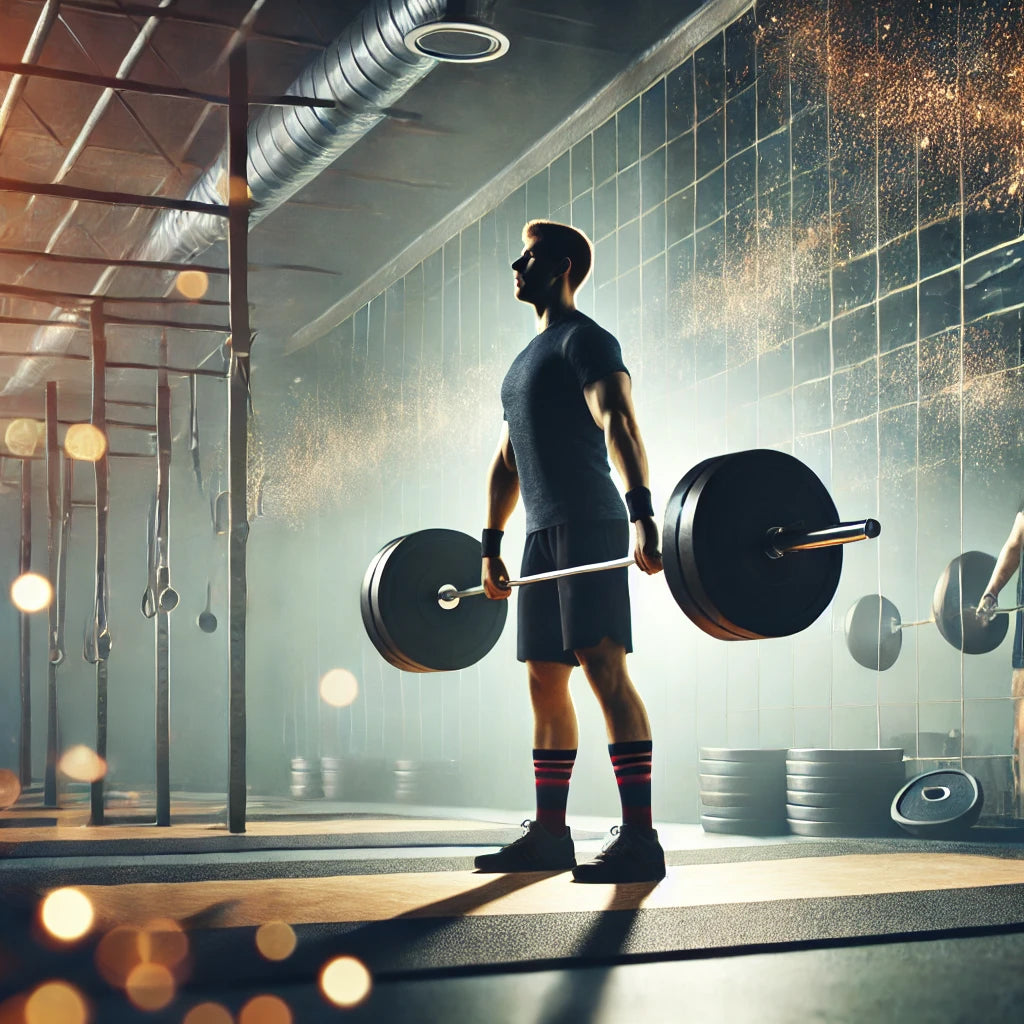
The Benefits of Olympic Lifting in Functional Training
Share
Olympic lifting, which consists of the snatch and clean and jerk movements, is a discipline that goes far beyond weightlifting competitions. Incorporating Olympic lifting into your functional training offers numerous benefits, from increased strength and power to improved coordination and mobility. In this article, we’ll explore the benefits of Olympic lifting and how it can be integrated into your functional training to maximize results.
What is Olympic Lifting?
Olympic lifting is a discipline that involves lifting a barbell from the floor to overhead, using specific techniques to maximize strength and speed. There are two main movements:
- Snatch : The bar is lifted from the floor to above the head in one quick, continuous movement.
- Clean and Jerk : The bar is first lifted to the shoulders (clean) and then pushed above the head with the help of the legs (jerk).
Both movements require strength, power, technique and coordination, which makes them ideal for incorporating into functional training.
Benefits of Olympic Lifting in Functional Training
1. Total Strength Development
Olympic lifting works nearly every muscle group in your body, from your legs and glutes to your core, back and shoulders. The explosive nature of the movements also helps you build strength dynamically, which is essential for many functional activities in your daily life.
2. Increased Power and Explosiveness
Power is the ability to apply force quickly, and is one of the key traits developed through Olympic lifting. Movements like the snatch and clean and jerk require the athlete to generate a large amount of force in a short amount of time, which translates into improvements in speed and explosiveness.
3. Improved Coordination and Synchronization
Olympic lifting requires high levels of coordination between different muscle groups to move the bar efficiently. This need for synchronization between arms, legs and torso improves overall coordination, which is beneficial both in sports contexts and in daily activities.
4. Increased Mobility and Flexibility
To perform Olympic lifting movements correctly, it is necessary to have good joint mobility, especially in the ankles, hips and shoulders. With regular practice, athletes can improve their flexibility and range of motion, which helps prevent injuries and improves performance in other activities.
5. Core Development and Stability
The core plays a crucial role in Olympic lifting, as it is needed to stabilize the body and transfer power from the legs to the upper body. By integrating these movements into your functional training, you can effectively strengthen your core, improving overall stability and balance.
6. Burn Calories and Improve Body Composition
Olympic lifting is a high-intensity exercise that involves large muscle groups, resulting in high calorie burn. Plus, the combination of strength and cardio in one movement helps improve body composition, promoting fat loss and lean muscle gain.
How to Integrate Olympic Lifting into Functional Training
1. Proper Warm-up
Before starting any Olympic lifting session, it is essential to warm up your body thoroughly. Include mobility exercises for your ankles, hips and shoulders, along with dynamic movements that prepare your muscles and joints for the effort.
2. Learn the Correct Technique
Because of the complexity of the movements, it’s crucial to learn proper Olympic lifting technique before adding weight. Consider working with a qualified coach or watching instructional videos to ensure you’re performing the movements safely and effectively.
3. Start with Light Weights
Start with light weights to master the technique before progressing to heavier weights. As your technique improves, you can gradually increase the weight, while always focusing on proper form.
4. Incorporate Lifting Movements into Functional Circuits
An effective way to integrate Olympic lifting into your functional training is through circuits that combine these movements with other full-body exercises. For example, you could alternate between the snatch and exercises like burpees, box jumps, or push-ups to create a workout that challenges both your strength and cardiovascular endurance.
5. Focus on Recovery
Due to the intensity of Olympic lifting, recovery is essential. Be sure to include rest or light training days between heavy lifting sessions to allow your muscles to recover and strengthen.
Conclusion
Olympic lifting is a powerful addition to functional training, offering a range of benefits ranging from developing strength and power to improving mobility and coordination. By incorporating these movements into your training, you can improve your performance in a variety of physical activities and achieve greater efficiency in your everyday movements. Always remember to prioritize technique and safety to maximize results and minimize the risk of injury.
Related Articles
- How to Improve Mobility for Weightlifting
- Tips for Preventing Injuries During Strength Training
- The Importance of the Core in Functional Training
For more tips and guidance on how to improve your training, visit www.treinoemcasa.com
What is the right training program for me?
We recommend that you check which training program is best suited for you. Find out which training program is right for you where after completing the questionnaire we will help you identify the ideal training plan based on your goals and fitness level, ensuring more efficient and targeted development.
Revenues:
- Chicken Salad with Quinoa and Avocado
- Recipe: Protein Pancakes
- Chicken Salad with Quinoa and Avocado
- Recipe: Banana Smoothie with Rice and Oat Milk
- Green Detox Smoothie Recipe
Other topics:
Challenge of the day | Tips | Training
Suggested services:
Diagnosis, assessment/reassessment | Planning | Accompanied training
Suggested ebooks:
100 No Excuses Workouts | Amateur race | Fitness Detox
Suggested training programs:
Military training | Metabolic training
Where to buy Food Supplements
Whey protein 900g chocolate flavor
Creatine monohydrate with Creapure® seal 240 capsules
Omega-3 Supplement
For more tips on training and health care, continue to follow our articles at www.treinoemcasa.com



